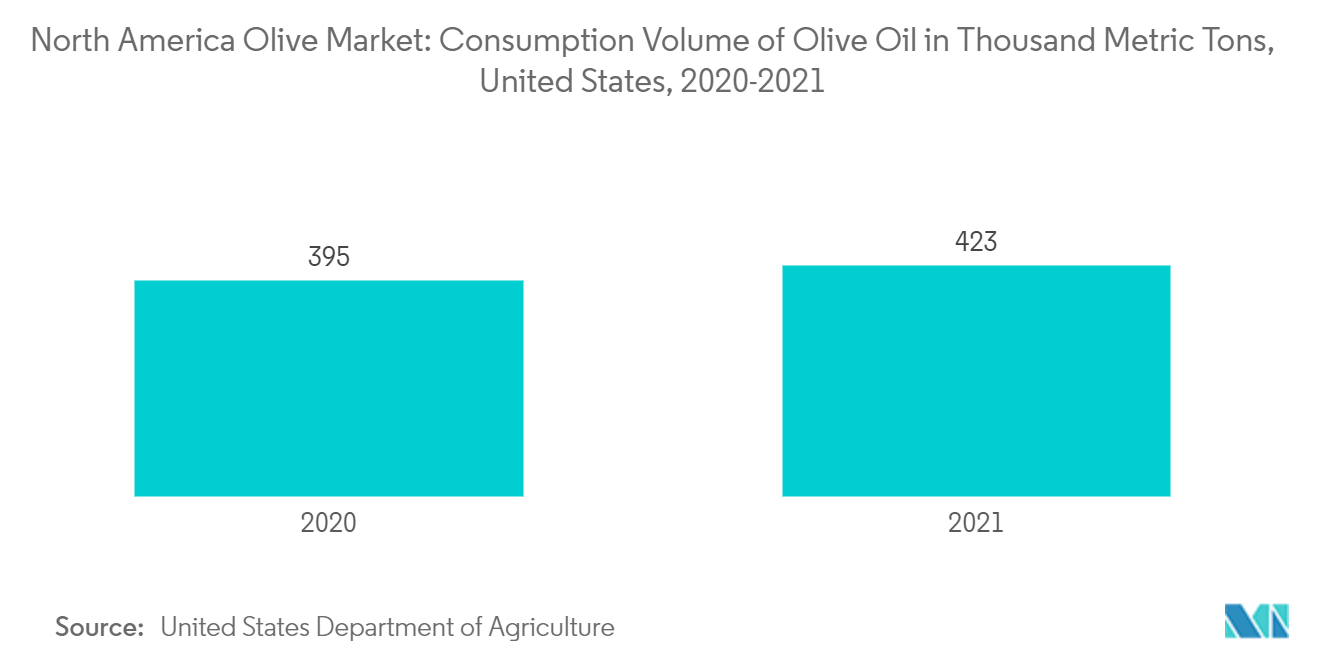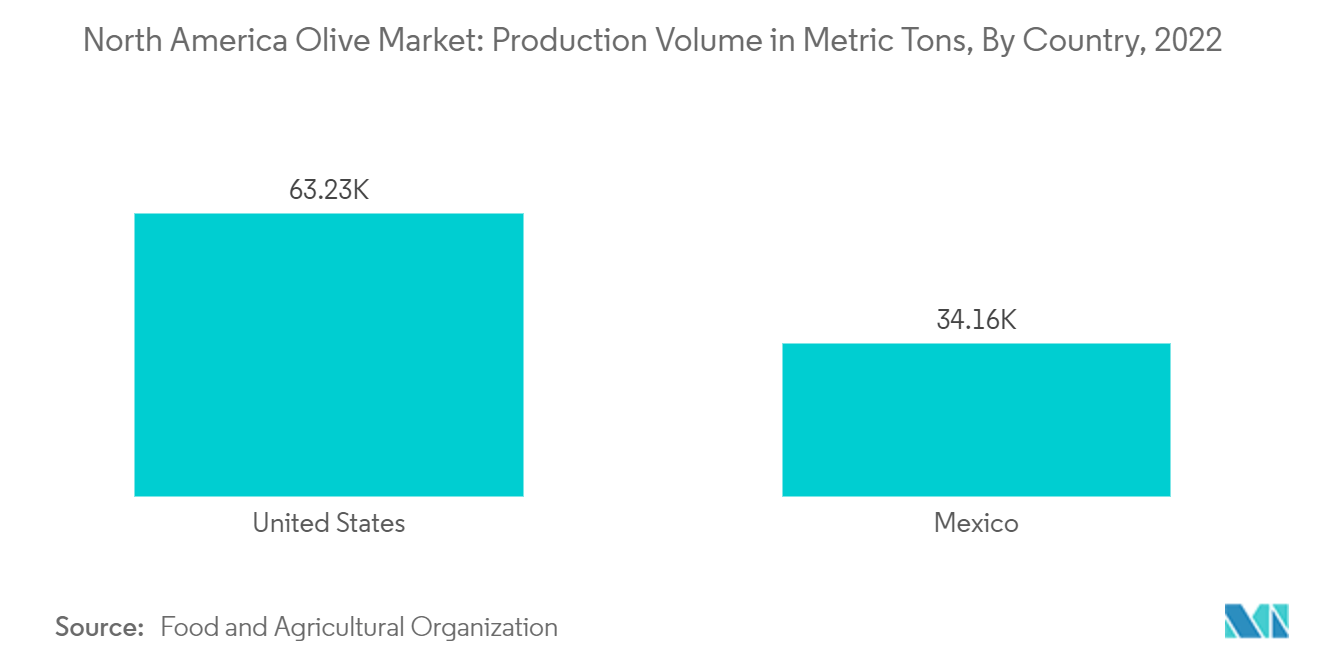Market Trends of North America Olive Industry
Dietary Revolution Leading to Upsurge in Demand for Olive Oil
In North America, demand for olive oil has increased significantly in recent years, largely in response to the increased publicity of the associated health benefits of unsaturated fats. Some of the promoted beneficial attributes of olive oil include being a high source of antioxidants such as vitamins E and K and being a monounsaturated fat, which helps to prevent cardiovascular diseases. Increasing health consciousness among consumers and the trend of healthy eating has become olive oil a preferred cooking medium, replacing traditional oils such as soybean and sunflower oil. The popularity of Mediterranean cuisine, which extensively uses olive oil, has also contributed to the increasing demand in the North American market. Moreover, the increasing demand for organic and natural food products has influenced the growth of the olive market, as consumers are willing to pay higher prices for such products.
According to the North American Olive Oil Association (NAOOA), from 2022 to 2023, organic olive oil sales in the United States increased by 10% compared to 2020 to 2021. As the demand for olive oil is positively correlated with the demand for olives, the global demand for olive oil has spurred the need for higher production of olives. The olive oil consumption in the United States was 406 thousand metric tons in 2019, which increased to 423 thousand metric tons in 2022, owing to a shift in the consumption of olive oil from the pomace variant to pure, extra light, and virgin categories.
Additionally, olive oil occupied a prominent position in Mexican cuisine, adding a unique twist to the country’s vibrant food culture. In central Mexico, traditional meat dishes increasingly feature olive oil, whether basting grilled meats or adding a finishing touch to stews. The Yucatan peninsula, celebrated for its distinct culinary offerings, is incorporating olive oil into its signature dishes, such as poc chuc, a grilled pork specialty. Furthermore, the trend of using infused olive oils is expanding flavor horizons in Mexican cooking. Oils infused with cilantro or epazote elevate the taste of grilled meats and roasted vegetables. These infused oils are also becoming popular for bread dipping, a practice gaining traction in Mexican dining. Thus, the rising trend of olive oil consumption is anticipated to act as a catalyst in the growth of olive production, hence driving the North American olive market.

The United States Holds a Significant Share in Olive Production
Olive production in the United States is primarily concentrated in regions with a Mediterranean-like climate, which is ideal for olive cultivation. California is the leading producer of olives in the United States, accounting for over 95% of the country’s olive production. The Central Valley, particularly Fresno, Tulare, and Madera counties, is known for its extensive olive groves. In addition, regions in Texas, Georgia, Arizona, and Florida contribute to the country's olive production.
According to the Food and Agricultural Organization, in 2020, the United States produced 61,420 metric tons of olive oil, which increased to 63,230 metric tons in 2022. Favorable climatic conditions in the United States have helped it become one of the major producers of olives. The mission olive variety dominates cultivation in the United States, but the most popular Italian, Spanish, and Greek varieties are also widely grown. Arbequina, Arbosana, Coratina, Frantoio, Koroneiki, Leccino, and Picual are among the olive varieties that are widely grown.
The respective governments and associations have initiated several support policies and programs, including timely tax rebates and subsidies for olive growers, to stabilize the production level by covering variable costs in times of distress. For instance, the USDA’s Agricultural Marketing Service (AMS) provides federal marketing orders for California-grown olives. These orders standardize quality and marketing practices, ensuring consistency and bolstering the commercial success of the olive industry. Administered locally by the California Olive Committee, these orders have benefited nearly 1,000 family farms nationwide. Therefore, the rising supportive government policies and initiatives are projected to boost olive production in the United States during the forecast period.


